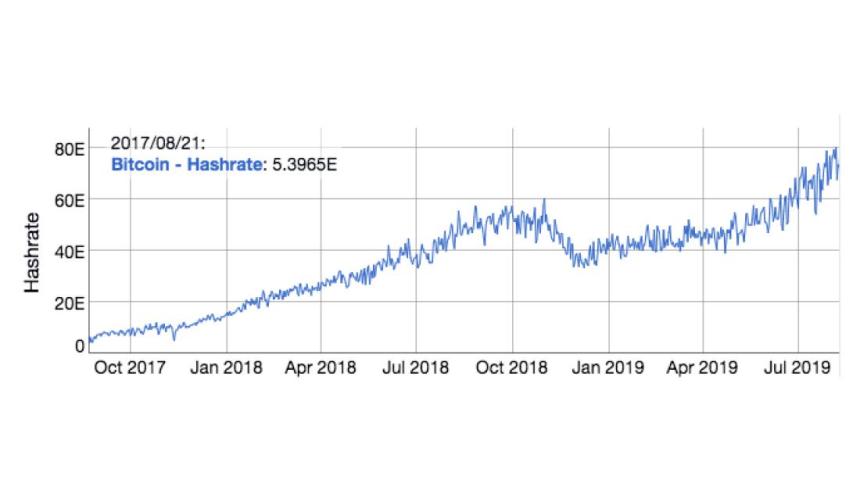“Not clear why miners would rush to add capacity into an event next year where the rewards will be halved,” wrote Skew. “They must be very confident in their competitiveness or very bullish on price.”
Litecoin’s halving is a perfect reminder that you better hurry up to own some Bitcoin today before it halves. Plan your future wisely. — Trezor (@Trezor)
New Hashrate High

Willy Woo, a renowned Bitcoin on-chain analyst, conceptualized an indicator called ‘Bitcoin Difficult Ribbon’ to show miners’ accumulation and capitulation against fluctuating hashrate and mining difficulties. A rising price, Woo noted, reflects that miners are not in a hurry to offload their bitcoins – it means they can still afford to run their operations thanks to their healthy cash-liquidity. Therefore, the bitcoin spot market faces a lesser selling pressure.
“The lack of miner selling pressure allows the price to stabilize and then climb; the classic accumulation bottom,” he said.
Introducing the Bitcoin Difficulty Ribbon. When the ribbon compresses, or flips negative, these are the best time to buy in and get exposure to Bitcoin. The ribbon consists of simple moving averages on mining difficulty so we can easily see the rate of change in difficulty. — Willy Woo (@woonomic)
Demand has to Go Up
As miners become accumulators – supplying a lesser number of bitcoin units to the retail market – the demand-side plays a vital role to determine the operations’ overall profitability. In the absence of demand, miners would need to force-sell their bitcoins at a lower rate. The move would bring the prices down, overall. That also means that miners will shut down their mining rigs, which means a drop in hash-rate. According to Luis Horra, a P.h.D candidate in Economics at the University of Valladolid, near-term speculation drives the interim demand for bitcoin. It means the cryptocurrency could remain volatile unless investors develop solid use cases for it.“Bitcoin is not demanded as a safe-haven commodity or a medium of exchange,” Horra in his study. “In the short term, speculation largely explains the demand for Bitcoin. In the long term, demand might be driven by expectations regarding Bitcoin’s future utility as a medium of exchange.”
As it appears, miners believe in the long-term potential of bitcoin thanks to recent developments about its adoption on Wall Street (read Bakkt).












